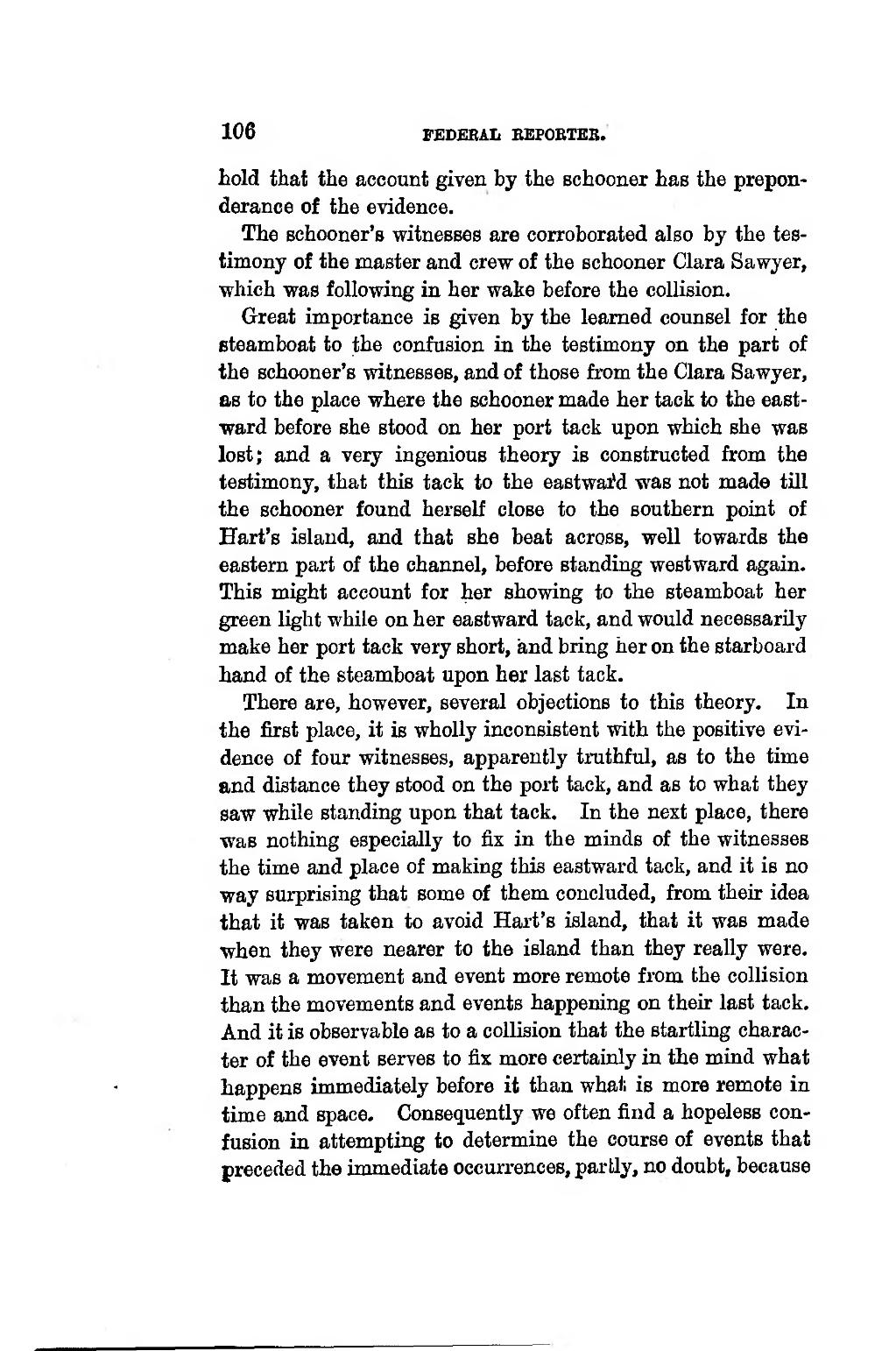106 FEDERAL REPORTER. �hold that the account given by the schooner bas the prepon- derance of the evidence. �The schooner'g witnesses are corroborated also by the tes- timony of the master and crew of the schooner Clara Sawyer, which was following in her wake before the collision. �Great importance is given by the learned counsel for the Bteamboat to the confusion in the testimony on the part of the schooner's witnesses, and of those from the Clara Sawyer, as to the place where the schooner made her tack to the east- ward before she stood on her port tack upon which she was lost; and a very ingenions theory is constructed from the testimony, that this tack to the eastwaild was not made till the schooner found herself close to the southern point of Hart's island, and that she beat across, well towards the eastem part of the channel, before standing westward again. This might account for her showing to the steamboat her green light while on her eastward tack, and would necessarily make her port tack very short, and bring her on the starboard hand of the steamboat upon her last tack. �There are, however, several objections to this theory. In the first place, it is wholly inconsistent with the positive evi- dence of four witnesses, apparently truthful, as to the time and distance they stood on the port tack, and as to what they saw while standing upon that tack. In the next place, there was nothing especially to ax in the minds of the witnesses the time and place of making this eastward tack, and it is no way surprising that some of them concluded, from their idea that it was taken to avoid Hart's island, that it was made when they were nearer to the island than they really were. It was a movement and event more remote from the collision than the movements and events happening on their last tack. And it is observable as to a collision that the startling charac- ter of the event serves to fix more certainly in the mind what happens immediately before it than what is more remote in time and space. Consequently we often find a hopeless con- fusion in attempting to determine the course of events that preceded the immediate occurrences, partly, no doubt, because ����
